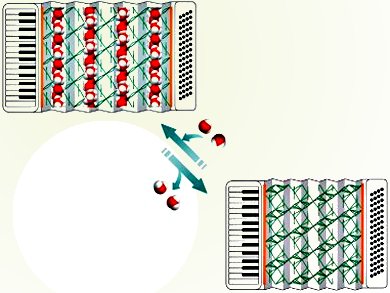Responsive materials change either their properties or function with external stimuli, such as temperature, light, pressure, electric and magnetic fields, and chemical triggers. This ability makes them of interest for sensors, detectors, actuators, and transducers. Metal–organic frameworks (MOFs), especially soft porous crystals, are one promising class of responsive materials as addition and removal of guest molecules in the crystal lattice can result in significant changes in the shape or size including breathing-like movements upon contraction and expansion or single-crystal-to-single-crystal (SCSC) transformations.
Ye-Feng Yao, East China Normal University, Zhe-Ming Wang, Peking University, Wen Zhang, Southeast University, all China, and colleagues have created a metal–cyanide framework, [CH6N3]2[FeK2(H2O)6(CN)6], that undergoes a reversible SCSC transformation triggered by dehydration and rehydration. The structure consists of a two-dimensional bimetallic layer with guanidinium cations residing in K4Fe3 defective cubane units.
Upon dehydration, the framework transforms to the dehydrated form, [CH6N3]2[FeK2(CN)6]. The reversible dehydration–rehydration process causes a uniaxial or accordion-like contraction–expansion movement along the crystallographic c axis. The size changes by as much as 24 %, which is rare in responsive MOF crystals. This responsive behavior arises from weak hydrogen-bonding interactions and electrostatic interactions that generate cooperativity among the water molecules, K ions, and CN groups between the two-dimensional bimetallic layers.
- Uniaxial Movements of a Metal-Cyanide Framework Switched by Weak Interactions through Dehydration and Rehydration,
Bin Wei, Ran Shang, Xi Zhang, Xiu-Dan Shao, Ye-Feng Yao, Zhe-Ming Wang, Ren-Gen Xiong, Wen Zhang,
Chem. Europ. J. 2014.
DOI: 10.1002/chem.201402892



Inspirational and educative to the field of organo-metallics in Chemistry. Great work